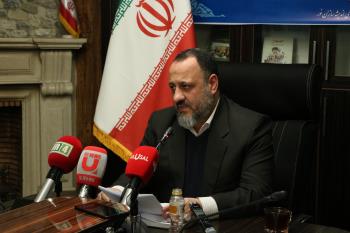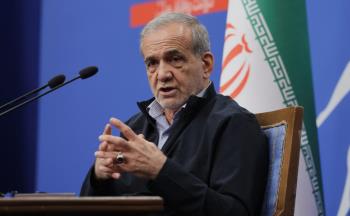Alwaght- Afghanistan internal circles' debate over whether to admit the Taliban militant group to the country’s official political scene has often proved heated and controversial. The inconsistent stances of the top government officials and the lawmakers on the issue are apparently indicative of the degree of difference of views towards Taliban in Afghanistan's political and social structures and also among the masses.
Taliban a fragmented organization
Definition of the Taliban in Afghanistan varies, sometimes fundamentally, from one party to the other that to some extent is due to general distinction between factions of the militant group.
Taliban organization covers a wide spectrum of Salafi factions, ranging from moderate to extremely radical ones. Some of these factions are affiliated with Lashkar-e-Jhangvi, one of the most extremist offshoots of Taliban. Some others reserve clear moderation, like those who are close to branch of Taliban that runs a political office in Doha, Qatar.
With this in mind, Taliban is by no means a body with generally united features. Such distinction highly beclouds Kabul leaders' concept of Taliban. To put it differently, there is no obvious and agreed-upon definition of Taliban held by the Afghan leaders. This means that when they say Taliban, they point to a limited range of Taliban factions, and decline to mean Taliban as a whole.
Additionally, the ethnic and sectarian polarization in Afghanistan certainly imposes its pressures and principles on the official and unofficial postures in the country. Taliban is totally an ethnic organization with Pashtun roots. Ethnicity affects the stances of government officials and members of parliament close to or from Pashtun ethnic group, leading them to show support for and inclination to compromise with the militants. On the other side, stand the non-Pashtun ethnic groups like the Hazara people who majorly live in north of the country and take anti-Taliban stances.
So the Afghan politicians' inconsistent definition of the Taliban on the one hand and the country’s ethnicity-based structure on the other hand are the reasons behind diverse and sometimes antithetical viewing of Taliban by the Afghan political figures.
Taliban areas of influence
No precise places can be marked as being fully under control of Taliban as its distribution in the country stretches from the northern to the southern regions. However, since assumption of office by President Ashraf Ghani in 2014, the fighting shifted from former battlefields in predominantly Pashtun-inhabited regions of southern Afghanistan to Hazara-inhabited northern regions.
Early in March this year, the Taliban published a “report” that attempted to determine areas in Afghanistan it controls as well as contested areas and areas under the influence of the Afghan ruling. The report, entitled “Percent of Country under the Control of Mujahedeen,” covered 349 of the 400 known districts of Afghanistan. Published on the group’s official website Voice of Jihad, the report suggest that Taliban fully controls 34 districts, and contests another 167 districts (these are districts where the Taliban claims it controls between 40 to 99 percent of the territory). But the experts cast doubt on the veracity of the report’s information, but at the same time say that it paints a dire but realistic picture of the country’s security conditions.
Therefore, no clear image of precise distribution of Taliban can be given as some districts are frequently exchanged between government forces and the Taliban fighters. With emergence of ISIS terrorist group in Afghanistan’s southern regions, Taliban now has to deal with a new rival, though ISIS has so far seized limited southern regions where the country shares borders with Pakistan.
Taliban outlook
Beside different looking at the Taliban among the Afghan political circles that stem from Taliban's fragmented structure, the militant group itself has suffered from division, especially after 2015 disclosure of death of its leader Mullah Omar and selection of subsequent leader Mullah Mansour who was killed by US airstrike in Pakistan. All these happenings make the militant group’s future shrouded in ambiguity.
Some factions, those from the orbit of Mullah Mansour, may choose to open dialogue channels and strike deals with the government rather than staging armed struggle against the central government as part of the decades-long domestic war.
Peace deals with pro-Mansour factions is likely as Ghani government shows green light to peace process with them, as it recently reached an agreement with Hezb-e-Islami, allowing its leader Gulbuddin Hekmatyar to return to the capital Kabul in early May after 20 years in hiding.
Others my set eye on foreign support especially from Pakistan. This means they will continue assaults on the government forces with support from foreign agencies.
Meanwhile, the highly likely status could be Taliban extremist factions' alliance with the ISIS. If happens, this integration will lead to fresh confrontation this time between the rebranded Taliban fighters and the militant group’s pro-compromise factions.



























